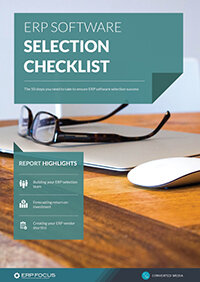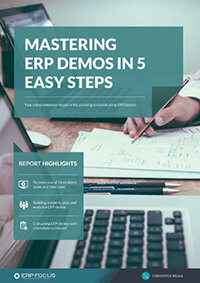Do I need a new ERP system?
Selecting a new ERP system is a big undertaking for any company. There are associated costs, as well as big commitments for employee buy-in, and time to select and implement a new system. You need to be sure that a new ERP is the right one for your business.
So, how do you decide if you need a new ERP system?
First, we’ll start with reviewing our existing system and business processes to determine our company’s pain points, and then we’ll review how a new ERP could alleviate some of these issues.
How do I know when it’s time to change ERP?
Whilst many companies will be moving on from smaller systems that they have outgrown, or perhaps even in-house homegrown solutions, other companies will be looking for a system that addresses the pain points their current system does not.
One of the key indicators that you might need a new ERP is that you can’t get good, accurate, and timely information from your existing system. Your existing reporting systems may make it difficult to access information; your company may even need your IT department to pull and write the reports. Or, even worse, the data you need might not be available in the system at all.
Beyond in-house process issues, there are also customers to consider. Are customer orders running late or getting lost? Or, is the stock of products or components running out because they weren't reordered from suppliers in time? Is this causing your business to lose orders or customers? And, is that leading to declining profitability?
Even when things aren’t going wrong, could you be making large efficiency improvements across the business? Purchasing may need to spend a couple of hours a day to raise orders, but now they are devoting so much time to paperwork they don’t have enough hours to seek out better, more reliable suppliers and lower prices. Could reports and month-end figures be published faster? How much time could we free up in the warehouse by having accurate inventory so employees aren’t searching for stock that isn’t there?
Does your current ERP allow you visibility over your business operations? Does it let you know:
- How your business is doing currently
- What’s going well, and what’s going badly?
- Are all your products profitable?
- Are all your customers profitable?
- Where should we make improvements?
If you’re struggling to answer these questions, it may be time to consider a new ERP system.
How could a new ERP benefit my business?
ERP is more than just eliminating pain points, it’s about making lasting improvements to your business.
An obvious benefit here is increasing profitability. ERP can improve profitability in a couple of ways:
- It allows profitability to be accurately measured
- It allows you to identify why certain products aren’t profitable
Let’s first look at accurately measuring profitability. All products aren’t created equal - some will be more profitable than others. Certain products may have a higher reject and rework rate than others, and others may find that repairs will be sent back from customers. All of this incurs a cost - both a monetary cost and a cost to potentially losing a customer with a bad product.
Customer profitability can also be measured; some customers may have a higher reject rate, or special packing requirements and admin costs that cut into the bottom line. Customers with a demand for minimum shelf-life remaining can mean products aren’t able to automatically be allocated on a FIFO basis. Customers who negotiated bulk discounts on products may still be getting those discounts even when sales are dropped. If your current system doesn’t identify customers who are now ordering less and why - then your new system should.
Of course: the key to measuring profitability is knowing what product costs actually are. But, especially if using Standard Costing, that's not always the case. Some companies only measure overall profitability or, at best, profitability at a product group level: and that is often just not good enough for good decision making because companies need to decide whether or not they want to retain unprofitable products and unprofitable customers.
When either products or products are found to be unprofitable, ERP allows the root causes to be determined and hopefully addressed. Are particular components troublesome? Is the problem related to certain suppliers? Or certain manufacturing processes or machines? A good ERP system can help answer those questions.
Our ERP Selection Masterclass covers each step to selecting an ERP from determining business needs and requirements all the way to shortlisting and ERP contracts. Sign up today.
Free white paper

ERP Requirements template
Plan your ERP selection using our requirements template with 100 features in an editable spreadsheet. Include special requirements and extra detail in this exclusive template.

Featured white papers
-

ERP Software Pricing Guide
Get the latest pricing information on over 80 popular ERP systems, and learn how to budget for your ERP project in our free guide
Download -

60-Step ERP Selection Checklist
Get the comprehensive checklist for your ERP selection project
Download -

ERP Demo Guide & Scorecard
Master your ERP demo with 5 easy steps using our free guide (includes demo scorecard)
Download
Related articles
-

The best ERP systems for process manufacturing
Consider these ERP systems when selecting your next process manufacturing ERP
-

CMMC Compliance: What Aerospace and Defense Manufacturers Need to Know
Key insights on CMMC compliance, deadlines, and securing DoD contracts with CMMC 2.0 certificatio...
-

5 ERP pricing definitions you need to understand
Have you mastered the ERP pricing lexicon yet? Getting to grips with these five definitions is a ...

